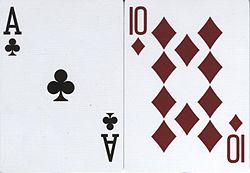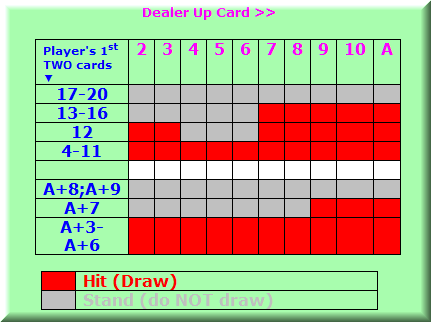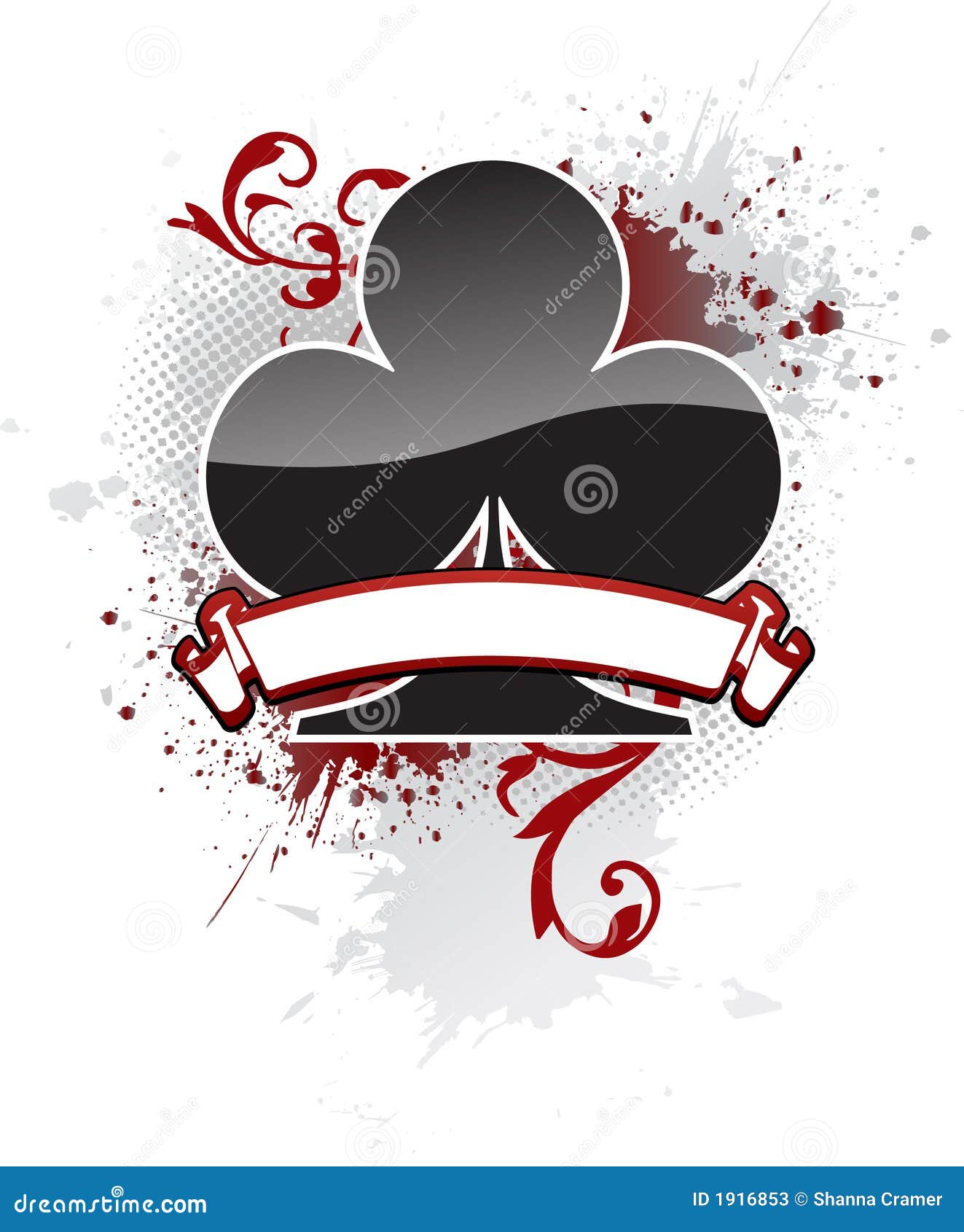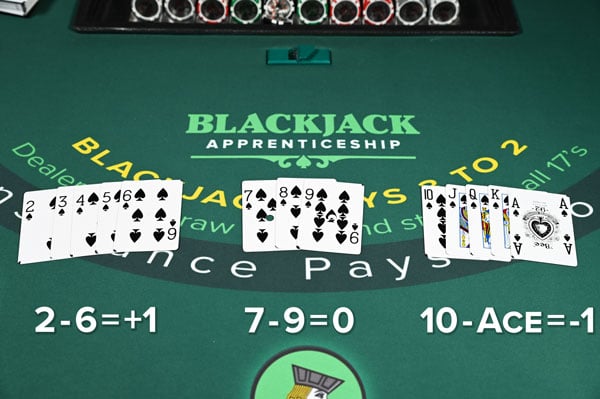Blackjack combines random chance with a low house edge and player skill. Players love the game because it is both challenging and – if you wish – relatively low risk.
This makes sense, since counting cards online would be so easy. You could even use a pen and paper! Of course, playing online is still a great way to practice, so keep your blackjack casino online accounts open while you learn to count cards. Read, read, read.
How to count cards in Blackjack. Blackjack is unique in that it can be legally beaten. It is the only game in the casino where past outcomes can influence future outcomes. If you think that betting on red after five black numbers in Roulette is smart, please stop reading. Colin has been counting cards for over 15 years, and ran a multi-million dollar blackjack team. You may have seen his team featured in the documentary Holy Rollers: The True Story of Card Counting. Essentially, counting cards in blackjack involves assigning values to every card dealt out. By keeping a running count, you can assess whether the cards still to come will be high value or low value. The player continues to add to the count for every card dealt, including the dealer's cards. Beat the Dealer. Edward Oakley Thorp is an American mathematics professor and blackjack player.
Some people can play blackjack for hours. For some the game is a chance to be social. For some the game is an intellectual challenge.
Monopoly slot machine bonus. No matter your style of play or why you're at the table, you only have 1 opponent: the dealer.
A common mistake I myself used to make was believing that other players' choices affected my own chances of winning or losing. The number of cards left to play dwindles regardless of where you sit at the table. If you're counting cards then you just count what has been played.
When it's your turn you need to focus on what is in the dealer's hand. The up card should play a bigger role in your next decision than how many face cards you've counted since the last shuffle.
If you want to win blackjack more often than anyone else then get a job as a dealer. Blackjack dealers are there to handle the cards and enforce the rules. They don't have to worry about strategy because the rules decide their strategy.


If you count cards you should also know what counter measures the casino is using.
The tips that follow assume you're playing a table with 4 to 8 decks in the shoe. The goal here is to simplify your decision-making, so it's easier to see which strategy you want to use.
You should be able to apply these principles to any variation on blackjack. The less time you spend second-guessing yourself the better. Learn from your mistakes and take advantage of online blackjack games to practice simplified strategy.
Online gambling laws by state pennsylvania. Here is what you need to know about reading the dealer's up card.
1 – It's Your Entire Hand Versus 1 Card
Always count your points first. If you're holding 18 or higher you're done. Stand.
Less experienced blackjack players don't understand why they shouldn't split 10s. They see two 10 cards, not 20 points.
See the points first and the cards second.

All you'll ever see in most versions of blackjack is the dealer's up card. Look at your hand first and recognize either the pair you're holding or the total points you're holding.
In most versions of blackjack if you're holding 4 through 8 points you always hit regardless of what the dealer's up card is. After you hit you're dealing with a soft count, never a hard count.

When thinking about strategy it's easy to confuse the rules for soft or hard 13 but they do make a difference. And the dealer's up card affects that decision, too.
2 – Assume Nothing about the Dealer's Chances
You may have a strategy card you rely on, or you may have memorized every strategy play in the book. Either way you feel confident you know what to do in every situation.
By all means play basic strategy but remember that you're pitting your probabilities against the casino's probabilities. The probabilities always favor the casino.
They won't play a losing game. You have two things going for you: skill and luck. The casino has three things going for it: the game rules, the final play, and the probabilities.
Put another way, you're pitting strategy against rules in a game of luck. The rules have the advantage over blackjack strategy. Play who wants to be a millionaire slot. The game is exciting because the rules give the house such a small advantage players have a real chance of coming out ahead.
Regardless of what the dealer's up card is you don't know what she'll turn up when play returns to her. Frankly, if every player busts it doesn't matter what comes next – unless you're playing No Bust Blackjack, which is not a very common variant.
Perfect strategy only prevents you from busting when you stand. If you take a card it could be the wrong card.
And by the same token, standing doesn't guarantee you'll win. That's the nature of gambling.
3 – Read the Dealer Card as High or Low
If the dealer up card is 2 through 7 it's low. If it's 8 through ace it's high. Some people split the range differently but you'll see why I do it this way as you read on.
When you look at strategy charts one pattern should stand out quickly. You're going to hit more often when the dealer card is 8 through ace.
That doesn't mean you always hit on a high dealer card, but if the dealer is showing at least an 8 you'll have an easier time remembering when you should not hit.
Assuming you are playing 4-8 decks in a shoe, the strategy is very consistent.
If your hard point count is at least 13 and the dealer's up card is less than 7, you should stand.
If your soft point count you'll need to put a little more thought into what to do. You'll always hit if your soft point count is less than 18. But on some of these plays you'll want to double.
Knowing you need to hit is the simple part of the strategy. Master the strategies for doubling instead of trying to memorize every possible variant on hitting.
4 – One Split Decision Ignores the Dealer Card
When you're dealt two cards you'll want to think about what you should do. That's usually based on what the dealer's up card is in addition to what your pair is.
One rare exception to this rule is to always split aces. No need to think about it.
5 – The Next Easiest Rules to Remember for Splits
You'll always split 8s if the dealer stands on soft 17 but you won't split 8s if (the dealer hits on soft 17 and holds an ace). I put parentheses around that to make it clear the second decision depends on two conditions.
Technically, when the dealer hits on soft 17 the recommendation is to surrender 8s against an ace if you can, otherwise fight the uphill battle and split.
If you're dealt two 8s you need to remember what the table rules are and pay attention to the dealer's up card. That's not a complicated decision but in the heat of the moment some people split 8s on a dealer ace where she hits on soft 17.
Blackjack How To Play Video
That's not the end of the world. You might come out ahead anyway but the odds of that happening are not as good as when the dealer stands on soft 17.
6 – When Not to Split: High Card vs Low Pairs
Regardless of when the dealer stands or hits on soft 17, you should never split when:

If you count cards you should also know what counter measures the casino is using.
The tips that follow assume you're playing a table with 4 to 8 decks in the shoe. The goal here is to simplify your decision-making, so it's easier to see which strategy you want to use.
You should be able to apply these principles to any variation on blackjack. The less time you spend second-guessing yourself the better. Learn from your mistakes and take advantage of online blackjack games to practice simplified strategy.
Online gambling laws by state pennsylvania. Here is what you need to know about reading the dealer's up card.
1 – It's Your Entire Hand Versus 1 Card
Always count your points first. If you're holding 18 or higher you're done. Stand.
Less experienced blackjack players don't understand why they shouldn't split 10s. They see two 10 cards, not 20 points.
See the points first and the cards second.
All you'll ever see in most versions of blackjack is the dealer's up card. Look at your hand first and recognize either the pair you're holding or the total points you're holding.
In most versions of blackjack if you're holding 4 through 8 points you always hit regardless of what the dealer's up card is. After you hit you're dealing with a soft count, never a hard count.
When thinking about strategy it's easy to confuse the rules for soft or hard 13 but they do make a difference. And the dealer's up card affects that decision, too.
2 – Assume Nothing about the Dealer's Chances
You may have a strategy card you rely on, or you may have memorized every strategy play in the book. Either way you feel confident you know what to do in every situation.
By all means play basic strategy but remember that you're pitting your probabilities against the casino's probabilities. The probabilities always favor the casino.
They won't play a losing game. You have two things going for you: skill and luck. The casino has three things going for it: the game rules, the final play, and the probabilities.
Put another way, you're pitting strategy against rules in a game of luck. The rules have the advantage over blackjack strategy. Play who wants to be a millionaire slot. The game is exciting because the rules give the house such a small advantage players have a real chance of coming out ahead.
Regardless of what the dealer's up card is you don't know what she'll turn up when play returns to her. Frankly, if every player busts it doesn't matter what comes next – unless you're playing No Bust Blackjack, which is not a very common variant.
Perfect strategy only prevents you from busting when you stand. If you take a card it could be the wrong card.
And by the same token, standing doesn't guarantee you'll win. That's the nature of gambling.
3 – Read the Dealer Card as High or Low
If the dealer up card is 2 through 7 it's low. If it's 8 through ace it's high. Some people split the range differently but you'll see why I do it this way as you read on.
When you look at strategy charts one pattern should stand out quickly. You're going to hit more often when the dealer card is 8 through ace.
That doesn't mean you always hit on a high dealer card, but if the dealer is showing at least an 8 you'll have an easier time remembering when you should not hit.
Assuming you are playing 4-8 decks in a shoe, the strategy is very consistent.
If your hard point count is at least 13 and the dealer's up card is less than 7, you should stand.
If your soft point count you'll need to put a little more thought into what to do. You'll always hit if your soft point count is less than 18. But on some of these plays you'll want to double.
Knowing you need to hit is the simple part of the strategy. Master the strategies for doubling instead of trying to memorize every possible variant on hitting.
4 – One Split Decision Ignores the Dealer Card
When you're dealt two cards you'll want to think about what you should do. That's usually based on what the dealer's up card is in addition to what your pair is.
One rare exception to this rule is to always split aces. No need to think about it.
5 – The Next Easiest Rules to Remember for Splits
You'll always split 8s if the dealer stands on soft 17 but you won't split 8s if (the dealer hits on soft 17 and holds an ace). I put parentheses around that to make it clear the second decision depends on two conditions.
Technically, when the dealer hits on soft 17 the recommendation is to surrender 8s against an ace if you can, otherwise fight the uphill battle and split.
If you're dealt two 8s you need to remember what the table rules are and pay attention to the dealer's up card. That's not a complicated decision but in the heat of the moment some people split 8s on a dealer ace where she hits on soft 17.
Blackjack How To Play Video
That's not the end of the world. You might come out ahead anyway but the odds of that happening are not as good as when the dealer stands on soft 17.
6 – When Not to Split: High Card vs Low Pairs
Regardless of when the dealer stands or hits on soft 17, you should never split when:
- The dealer's up card is 8 or higher
- You're holding a pair of 7s or lower
In other words, it's easy to see splitting is a bad choice if the dealer's card is high and your pair cards are low.
Blackjack Card Values
If thinking in negatives is hard for you then always hit according to the above rules.
7 – When to Split: Low Card vs High Pairs
Printable Blackjack Card
If the dealer's card is less than 7 and your pair cards are at least 7s, you should always split.
How To Read Cards Blackjack
Just as there are other times to hit when you've got low pair cards against a high dealer card, there are times to split when you have a low pair against a low dealer card.
Blackjack Card Game
If you think of strategies falling into four quadrant then the dealer's up card puts you into 2 of those quadrants and your points or pairs put you into 1 of those 2 quadrants.
Each quadrant has a few exceptions except when your hand totals 18 points or higher.
Conclusion
Reading the dealer's up card helps you decide what kind of strategy you need. If you're lucky your decision is quick and simple.
Some players struggle to master strategy because they're thinking that every situation is unique. In reality many different situations have the same resolution.
Differences in table rules confuse some people and it's a good idea to practice playing multiple real money blackjack games so you become comfortable switching between the different rule variations. Just as you should teach yourself to look at your own cards first you should look at the table rules before you start playing.
Never ignore the table rules even if their variations are subtle because they are what the house leverages against you. Most of the time when players think the dealer has made a mistake it's really the players who assumed they were playing by a different set of rules.
